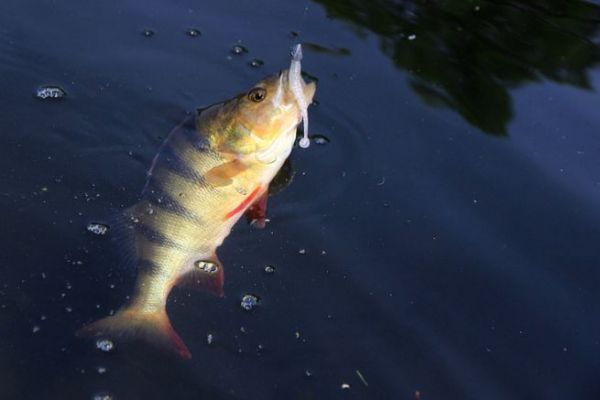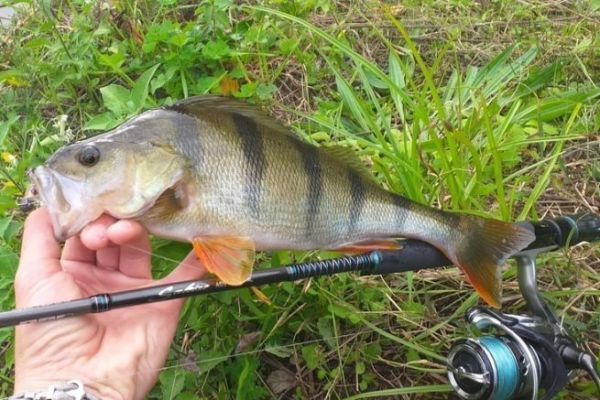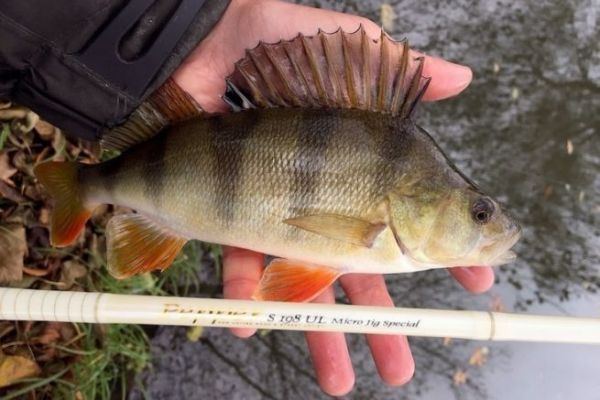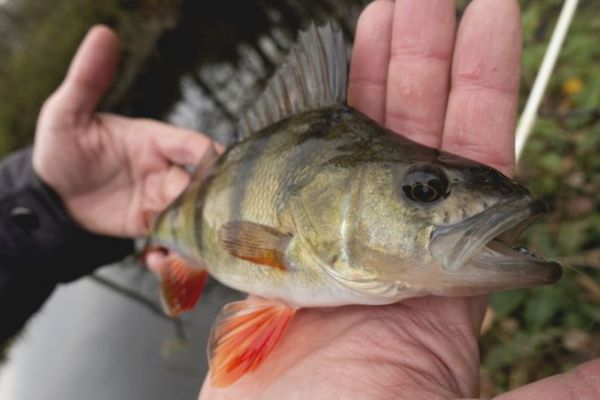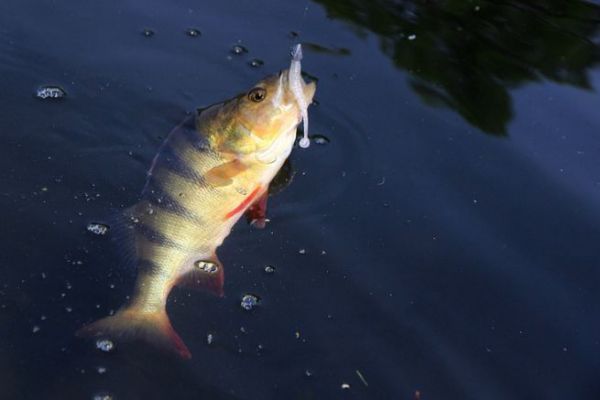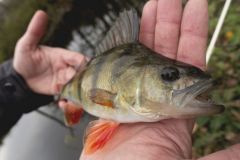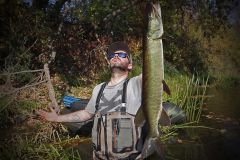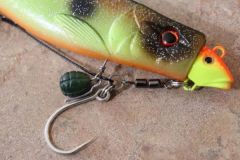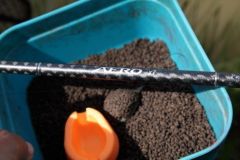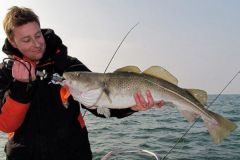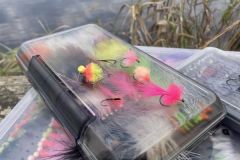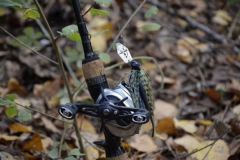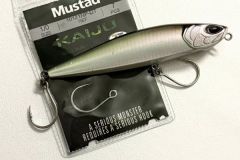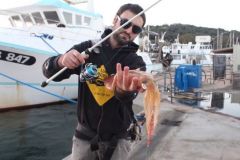As a preamble, and as I have already stated in previous articles, it is important to keep in mind that the smaller the lure, the more natural its presentation will be. It is precisely this search for naturalness that will interest us here.
Shads under lead
My choice will be almost exclusively on small soft lures of 3'' and most of the time of Shad type, that is to say presenting a caudal appendage (paddle) perpendicular to the body, that I will mount on very light leaded heads.
This combination of shad and fine lead head is essential because it will allow me to slow down the lure's descent in the water column in order to have the most vertical and slowest presentation possible in relatively weak water masses, and moreover in cold water. The principle is that the lure should be as fishy as possible throughout its descent to the bottom in order to match the level of activity of the fish in this early winter period.
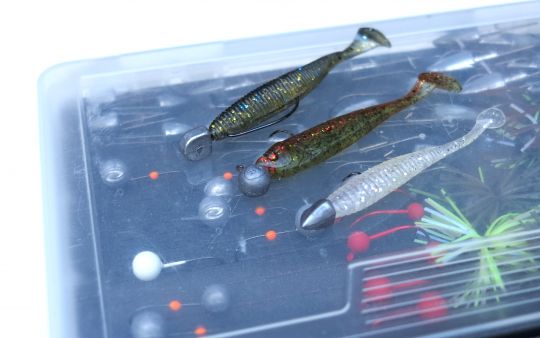
Depending on the animation I want to give to the lure, I will select the shads according to their profiles and the size of their paddle.
To accentuate the desired behavior of the lure, I will associate them with Finesse lead heads from 1.5 to 3.5g maximum of flat, round or triangular shape.
For the most gliding presentation possible, a round or flat lead head will be associated with a shad with a flat profile and a wide paddle, while a worm-shaped shad with a reduced paddle will be associated with a triangular lead head of the Dart type when you want to be more aggressive.
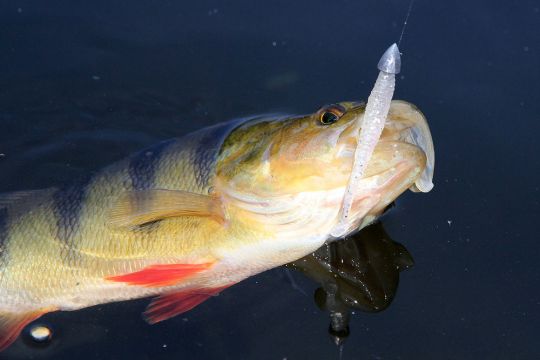
The particular case of the micro jig
As I developed in a report dedicated to pike fishing with rubber jig the use of micro jig for winter fishing is also very relevant because its use on perch meets the same constraints.
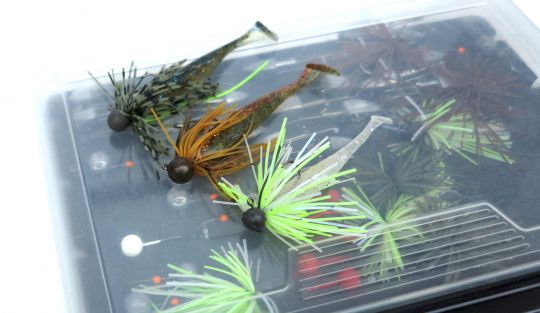
The first interest of the micro jig in the context that interests us is that its skirt will have the effect of slowing down the descent of the lure towards the bottom and accentuating its gliding effect. On the other hand, this same skirt will allow the lure to remain "alive" on the bottom until it is fully deployed. Finally, whether you use a single hook with an anti-weed system or a micro jig mounted on a Texas hook, both configurations allow you to fish obstacles more serenely.
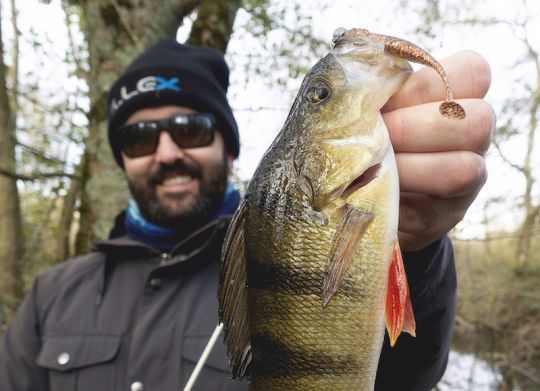
Colors of the lures
For the perch, which is more in clear waters, my choice is primarily on natural colors, it is my first filter. Then, the decomposing leaves on the bottom of the river give it brown almost black reflections, so I will in a second time choose lures whose hue is closer to this substrate. Finally, and depending on the feedback I get and the mood of the fish, I will be able to go for colors that contrast more (often white).
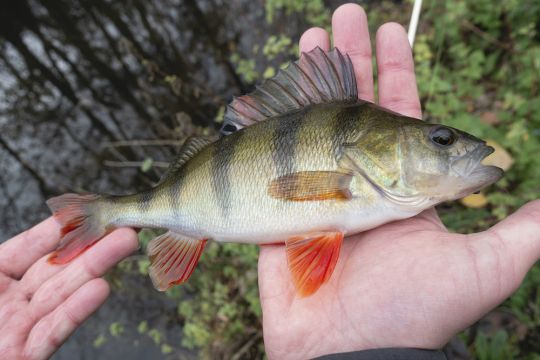
Advice
For this fishery, I largely advocate two things:
1) to crush the barb of the hooks which has the double interest to unhook more quickly and more easily the fish but also to leave more easily the obstacles in case of snag. A little "crossbow" shot and you get out most of the time!
2) Equip yourself with polarized glasses in order to correctly visualize the obstacles in which you have to go looking for the fish but also to visualize the fish. It is very common for fish to follow the lure slowly during its retrieve. Being able to observe them allows us to adapt our animation to their behavior as we would do for sight fishing for black bass in summer for example!

 /
/ 